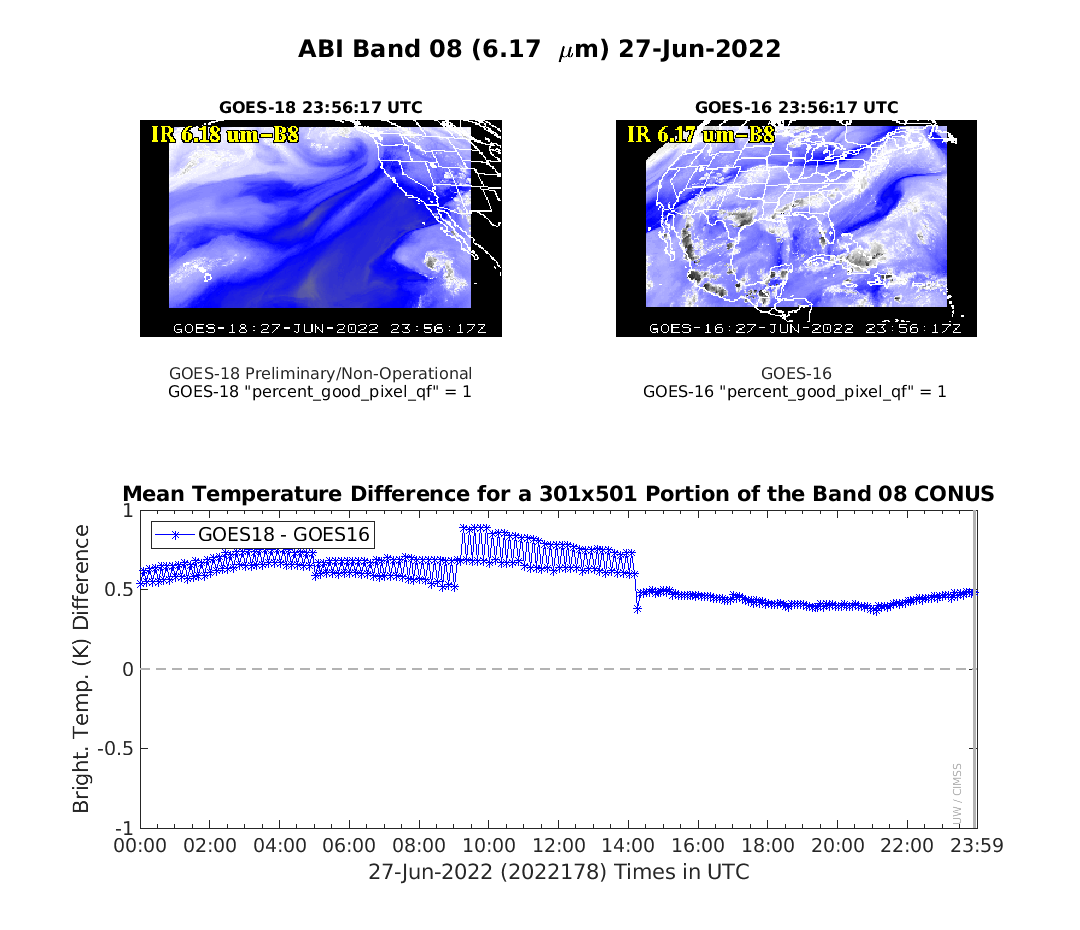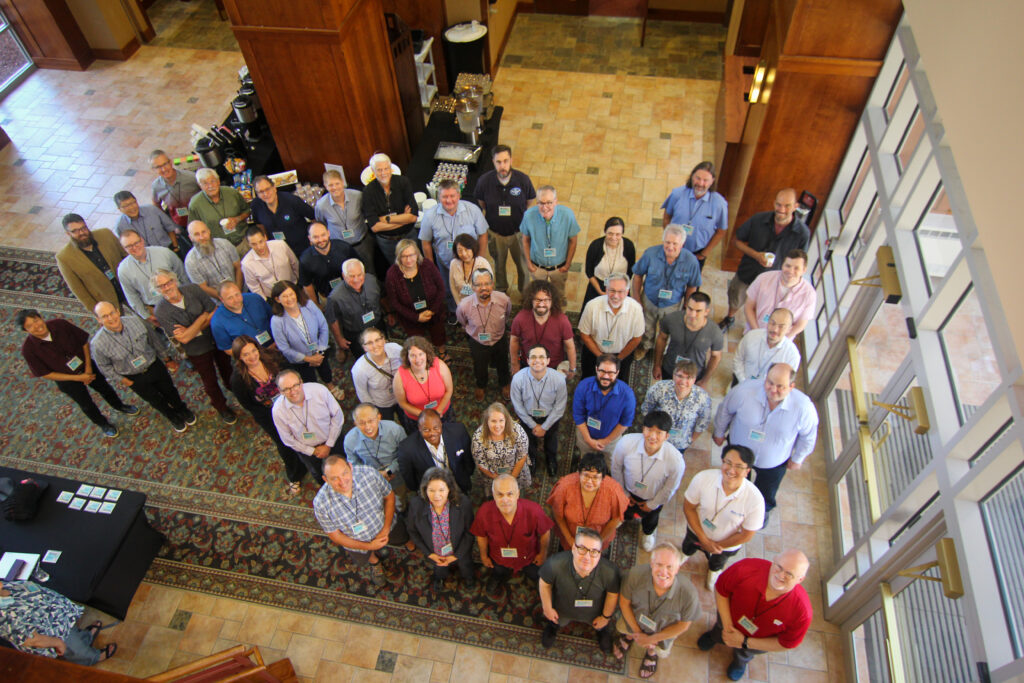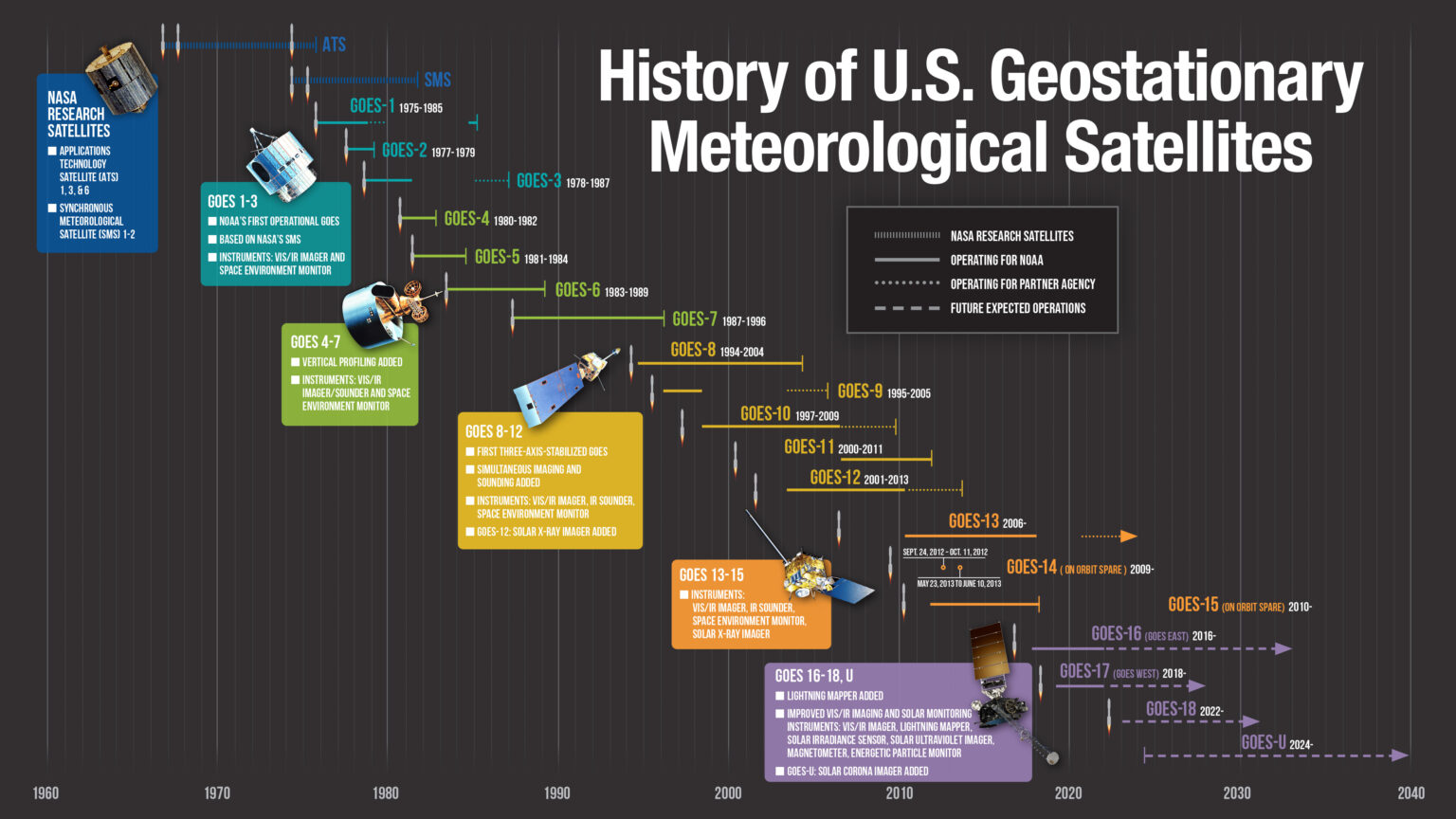
[ Archive ]

 |
CIMSS-NOAA Weekly Report [ Archive ] |
 |
CIMSS AND ASPB WEEKLY HIGHLIGHTS FOR THE WEEK ENDING JULY 1, 2022
DATA, INFORMATION, AND USE-INSPIRED SCIENCE:
GOES-18 Scan Mirror Emissivity LUT Investigated: Researchers at the Cooperative Institute for Meteorological Satellite Studies (CIMSS), in coordination with the GOES-R Calibration Working Group (CWG), monitored a GOES-18 Scan Mirror Emissivity (SME) Lookup Table (LUT) update that reduced a periodic inter-calibration anomaly (PICA) on all GOES-18 Advanced Baseline Imager (ABI) infrared bands. The GOES-R Algorithm Working Group (AWG) Imagery Team at CIMSS is part of the GOES-R Program post-launch test science team getting GOES-18 ready for eventual operational service. These results were presented at the GOES-R CWG weekly meeting July 1, 2022. (M. Gunshor, CIMSS, matg@ssec.wisc.edu, T. Schmit, E/RA2, 608-263-0291, tim.j.schmit@noaa.gov, J. Nelson, CIMSS)
 (Click image to enlarge)
(Click image to enlarge)
Figure: GOES-18 (Preliminary/Non-Operational) minus GOES-16 brightness temperature comparison for ABI band 8 CONUS sector on 27 June 2022 showing the periodic calibration anomaly prior to a scan mirror emissivity lookup table update implemented just after 14:00 UTC on this day. Similar improvement to calibration stability was seen in all infrared bands.
FUTURE OUTLOOK:
AWARDS AND RECOGNITION:
TRAVEL AND MEETINGS:
2022 CSPP Users' Group Meeting: The fifth Community Satellite Processing Package (CSPP) Users’ Group Meeting was held in person on the campus of the University of Wisconsin-Madison, 21-23 June 2022. Over 60 attendees representing the global community of directly received environmental satellite data users gathered to discuss a wide variety of topics related to reception, processing, and applications of direct broadcast data. Oral and poster presentations were given from direct broadcast users, government agencies, and vendors. CSPP is a NOAA funded initiative that supports software that allows the global satellite user community to create calibrated and geolocated science products from data acquired directly from the satellites in support of local applications. The meeting program can be found online at: https://www.ssec.wisc.edu/meetings/cspp/2022-meeting/program/. (K. Strabala, CIMSS/SSEC, 608-263-8752, L. Gumley, CIMSS/SSEC, G. Martin, CIMSS/SSEC, J. Braun, CIMSS/SSEC, A. Huang, CIMSS/SSEC)
 (Click image to enlarge)
(Click image to enlarge)
Figure: 2022 CSPP Users' Group Meeting Group Photo.
TRAINING AND EDUCATION:
Presentation on US Geo Imagers: As part of the University of Wisconsin-Madison Wednesday Nite at the Lab outreach series, Jean Phillips (SSEC) and Tim Schmit (NOAA) gave a presentation on June 29, 2022 that covered from the earliest days of satellite meteorology to future Geostationary Operational Environmental Satellite (GOES) plans. Applications Technology Satellite (ATS)-1 (1966) to GOES-U (2024) were covered, including an introduction to the next generation series. More information is available at https://science.wisc.edu/event/hybrid-wntl-wisconsins-role-in-earth-imaging-from-geostationary-orbit-1966-2022/. (T. Schmit, E/RA2, 608-263-0291)
 (Click image to enlarge)
(Click image to enlarge)
Figure: A timeline of U.S. geo imaging, from ATS to GOES-U. Credit: GOES-R Program Office.
CIMSS Presentation at AMS Short Course: Scott Lindstrom from the Cooperative Institute for Meteorological Satellite Studies (CIMSS) led a 2-hour session titled “Volcanic Eruptions as seen from Satellite” as the penultimate session of a 4-part American Meteorological Society (AMS) Short Course. The interactive session showed students how data from GOES-R (and other geostationary) and JPSS (and other polar orbiting) satellites can be used to observe and monitor volcanic eruptions and clouds. The class included a tutorial on the use of the Volcanic Cloud Monitoring website (https://volcano.ssec.wisc.edu/, overseen by M. Pavolonis, NOAA/NESDIS) at CIMSS. Class materials are available at this website maintained by J. Torres, CIRA: https://rammb2.cira.colostate.edu/training/ams-satmoc/. (S. Lindstrom, CIMSS, 608 263 4425)
VISIT Training on NUCAPS Profiles: Scott Lindstrom from the Cooperative Institute for Meteorological Satellite Studies (CIMSS) led a Virtual Institute for Satellite Integration Training (VISIT) session on NOAA-Unique Combined Atmospheric Processing System (NUCAPS) profiles to forecasters the forecast office in Columbia, South Carolina (WFO CAE). The 30-minute session showed how NUCAPS profiles were created, and highlighted uses of the thermodynamic information within the profiles and within gridded NUCAPS (S. Lindstrom, CIMSS, 608 263 4425)
MEDIA INTERACTIONS AND REQUESTS:
SOCIAL MEDIA AND BLOG Posts:
PUBLICATIONS:
Manuscript on assimilation of GOES-16/17 AMVs in HWRF published.: A manuscript entitled "Optimizing the Assimilation of the GOES-16/-17 Atmospheric Motion Vectors in the Hurricane Weather Forecasting (HWRF) Model", by Agnes H. N. Lim, Sharon E. Nebuda, James A. Jung, Jaime M. Daniels, Andrew Bailey, Wayne Bresky, Li Bi and Avichal Mehra, was published in the journal Remote Sensing. The manuscript documented on the evaluation of the assimilation the hourly full disk and 15 min CONUS AMVs from GOES-16 and -17 using tropical cyclones from the 2018–2020 hurricane seasons. Overall, GOES-16 and -17 AMVs are beneficial for improving tropical cyclone forecasting. Positive analysis and forecast impact are obtained for track error, intensity error, minimum central pressure error, and storm size. The paper is available online at https://www.mdpi.com/2072-4292/14/13/3068/htm. Citation: Lim, A.H.N., Lim, S.E. Nebuda, J.A. Jung, J.M. Daniels, A. Bailey, W. Bresky, L. Bi, and A. Mehra, 2022, Optimizing the Assimilation of the GOES-16/-17 Atmospheric Motion Vectors in the Hurricane Weather Forecasting (HWRF) Mode, Remote Sens. 2022, 14(13), 3068; https://doi.org/10.3390/rs14133068. (A. Lim, CIMSS, 608-263-6720)
OTHER:
| Archived Weeklies Page | Submit a report item |